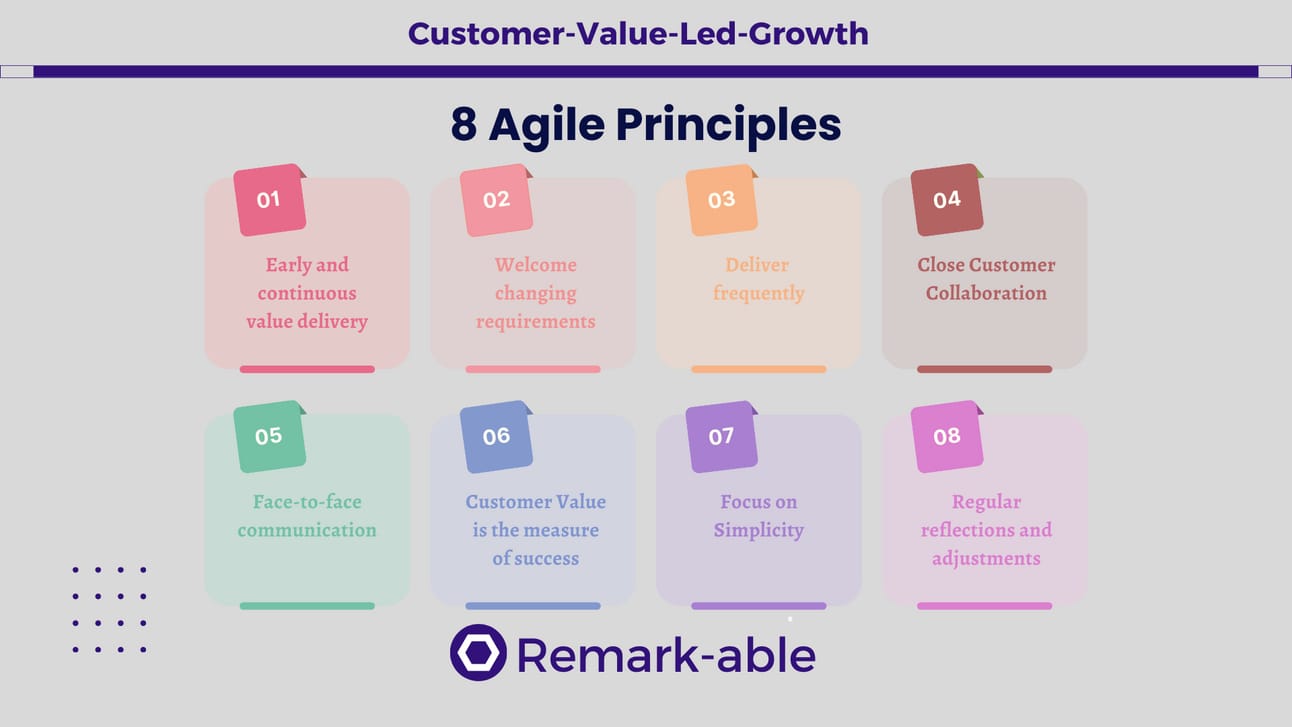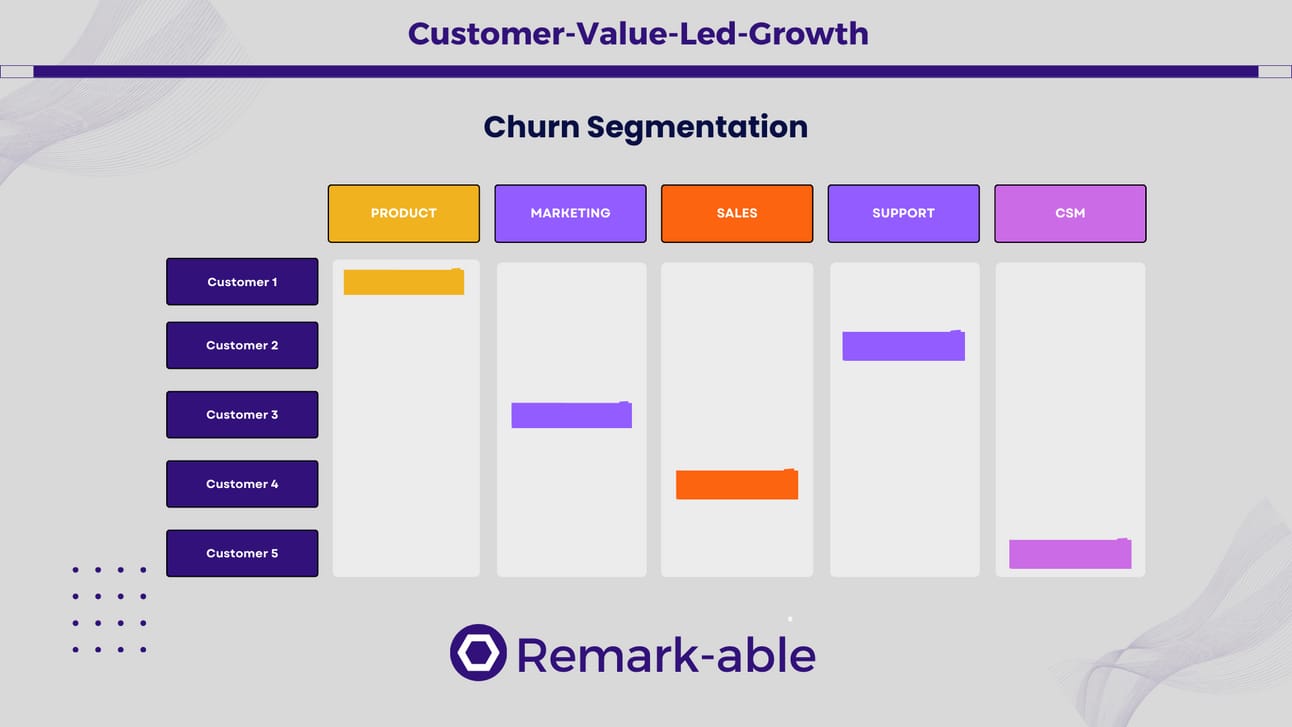
Hi, Markus here. Welcome to a premium edition of the Customer-Value-Led-Growth Newsletter.
Every week, I share strategies, guides, and frameworks to help you create exceptional value for your customers and company.
If you are not a paid subscriber, you might have missed
and 100+ other episodes 🔥
Consider subscribing to get the full experience and support my work 👇
I may repeat myself but it can’t be said often enough. Customers are not paying for convenience and mere usage anymore.
CFOs continue to turn expenses upside down to cut everything that does not deliver enough value according to their expectations.
As a Customer Success Manager, the challenge to live up to those expectations could not be higher. It’s unlikely that it will come to a halt anytime soon.
In today’s episode, I’ll introduce you to the Agile Methodology and show you how to use it to deliver more value to your customers.

What is ‘Agile’?
Let’s kick things off with a definition of what it means to be agile to start on the right foot.
The Agile methodology is a project management approach that involves breaking the project into phases and emphasizes continuous collaboration and improvement. Teams follow a cycle of planning, executing, and evaluating.
Agile methodology is a project management framework that breaks projects down into several dynamic phases, commonly known as sprints.
The Agile framework is an iterative methodology. After every sprint, teams reflect and look back to see if there was anything that could be improved so they can adjust their strategy for the next sprint.

Agile is the opposite of what’s happening in CSM at most companies today.
Instead of continuous iterations, there are one-size-fits-all programs.
Instead of critical reviews, there’s more of the same hoping for the best
Instead of sprints, there are black boxes with questionable outcomes.
And most certainly, ‘Agile’ is the exact opposite of reactive customer success management.
The 4 Pillars of Agile
The Agile Manifesto outlines 4 core values that are powering the methodology. As it’s originally been written for building software I made a few adaptions for our CSM purposes.
Outcomes over processes and tools: Agile CSMs are focused on creating results. They don’t stick to the “rules” and adapt to different situations and environments.
Outcomes over bureaucracy: Agile CSMs are focused on creating results. Completing administrative work is not as important as delivering value.
Customer collaboration over force-feeding: The Agile methodology puts customers front and center. Collaboration means complete transparency and making decisions together.
Responding to change over sticking to a plan: Customer Success Plans are important to create clarity and give directions. But they are not carved in stone. The agile framework allows teams to quickly adapt to changing realities.
👉 Patreon Platform 👈
Before we move forward, I’d like to announce the relaunch of my Patreon platform. A space built for fast learning and improving in real-time with short and actionable inputs.
The 5 Major Benefits of Agile CSM
Higher Success Rates
One of the things I dislike in CSM are dogmatic things like segmentation of customers in high-, medium- and low touch. Because it only considers what the company wants and not what customers need.
Following the Agile methodology you tailor the inputs and journey to every customer’s needs. Needless to say the results will be infinitely better and consequently you will create more revenue.
Immediate risk detection
Lots of churn risks are missed because CSMs are only looking at obvious churn signals. They are caught with their pants down when customers with all-green health scores “suddenly” leave.
When you are working this close with the customer in an Agile environment it’s next to impossible missing when things are going south.
And even if it’s not working out you can pull the plug early instead of both sides wasting trying to make something work that’s not meant to be.
Faster feedback and results
What are the 2 things slowing down the time-to-value? It’s idling- and wasted time. If you are talking to customers on a monthly basis you’ll get both of it. Customers might have been stuck for days but they did not ask for help because most of them don’t do.
Or they have spent weeks studying the wrong content and creating bad inputs that did not lead to the intended outcomes. Instead of fixing these issues right away you only start building solutions weeks later.
And you can only do it if customers are still around because they are certainly not patient. The Agile methodology is as close to collaborating in real-time as it can be.
Stronger customer relationships
There’s plenty of advice on how to improve customer relationships. It ranges from “creating personalized experiences” to “building a community”.
They are all missing the most fundamental thing that powers not only customers but all kinds of relationships: Showing that you care about the other person.
You don’t do that by using [First Name] in your E-mails or listing 30 articles from your knowledge base that might contain the answer customers seek. You do it by learning about and responding to their needs.
Churn intelligence
Technically, following the Agile methodology you should have a 0% churn rate. And that’s true when we are talking about the part of it that is under your control.

Namely, churn that happens due to insufficient training, education, and guidance. But as we know, this is far from all the churn you are suffering from.
Working closely with customers, even when it’s only for a brief time, will give you compelling insights into why things are not working out.
Instead of conducting exit interviews after customers are already gone you are witnessing the issues firsthand and you can reconstruct
The 8 Principles of Agile CSM
The Agile methodology commonly features a total of 12 principles guiding teams on their way. I’ve adopted 8 of them and cut the rest because they were not relevant for CSM.
